|
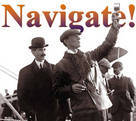
 Up
Up 
 Do-It-Yourself Do-It-Yourself
Wright Flyer 
(You are here.)
Past Successes




  Need
to Need
to
find your
bearings?
Try
these
navigation aids:
If this
is your first
visit, please stop by:
Something
to share?
Please:



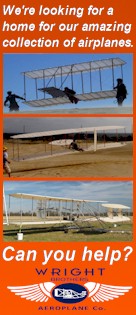 |
t is |
Available in Française, Español, Português, Deutsch, Россию,
中文,
日本, and others.
 ooking
for someone to build a replica of a Wright airplane? We do that. And
we bring something extra to the project. ooking
for someone to build a replica of a Wright airplane? We do that. And
we bring something extra to the project.
We get that a Wright
Flyer or or glider is an educational experience on
many levels. It goes without saying that the aircraft represents a
triumphant milestone in the history of science and technology. The
story of the first controlled flights is an opportunity to present
multiple concepts in science, technology, engineering, and
mathematics. At a deeper level, it is a clear and detailed
real-world example of the Scientific Method and the power it has to
change our lives.
And at a still deeper level, it is a
inspirational story of character – innovation, courage, dedication,
and above all the simple American virtue called gumption.
Sharpen your wits, put aside your doubts, roll up your sleeves and
get it done. It is for this reason that the story of the Wright
brothers, more so than any other scientific breakthrough, is an
essential part of our cultural mythology. It defines who we are and
where we are going. It is the story we tell our children to convince
them of the power of their dreams and, more important, that they
must be willing to do the work to achieve those dreams.
All of which are excellent reasons to hang a Wright Flyer in your
museum, your airport, or any other place where young minds are apt
to bump into it. But we take this educational experience thing
deeper still.
Hands-on science – We build most of our airplanes with the
involvement of young people, usually students from 9 to 16 years
old. Our mission is to get kids up close and personal with science
and technology, and building an airplane is an exciting way to do
just that. There are many parts of a Wright Flyer – the ribs, in
particular – that are simple enough for children to build under
adult supervision and do a flight-worthy job. So we have developed
"Rib Workshops" in which the participants build Flyer wing
ribs and sign them. They also glean some aviation history and
aeronautical science while they work.
We take these signed wing ribs, test them for structural
soundness, and incorporate them in an historically accurate replica
of a Wright Flyer. If a rib doesn't pass or if the workshops produce
too many ribs (as is frequently the case) we shave the signatures
off with a veneer saw and affix them to the wing spars. Once the
ribs and spars are covered with fabric, the signatures can no longer
be seen. The Flyer appears to be a perfect copy of the real thing.
But the kids know the signatures are there, as do their parents. The
invisible signatures remain a source of both individual and
collective pride.
Good will – Besides the obvious educational value to the
participants, our Rib Workshops have far-reaching benefits for your
institution. Because they are newsworthy, they immediately raise the
public awareness of your institution. The participation gives your
members and visitors ownership in the Flyer project; it is no longer
just an artifact you've purchased from another source. The parents
of the participants are impressed by and grateful for the
experience, and they will bring their kids back for more of the
same. Eventually, these young people will grow up and bring their
own children to your institution. Those that achieve positions of
wealth and leadership in adulthood will support your institution in
large part because of memorable experiences like the Rib Workshop
and the Do-It-Yourself Flyer. Programs like
these are the seed corn of every community-supported organization.
Fly-it-yourself – We also provide something that will
continue to make your Wright Flyer a memorable experience long after
the you sweep up the sawdust from the Rib Workshops. We've been
showing Wright aircraft at museums and air shows for ten years and
have noticed that these events generate a great deal more excitement
when your visitors can actually fly the aircraft. To this end,
we provide a Wright Flyer Flight Simulator with each
of the Flyers we build. The simulators are simple, durable, and easy
to maintain. Most important, they are a great deal of fun. An
historic airplane is ordinarily the center of an informative
display, but our simulator turns it into an interactive experience.
Your visitors walk away knowing first-hand what it's like to pilot
the very first airplane. Historic value – Although we
involve children in the construction of our Wright replicas, we take
pride in the quality and the historical accuracy of our workmanship.
Few organizations have done as much research as we have into the
construction methods of the Wright brothers, and none have done more
research into the flying characteristics of their aircraft. Thanks
to the generosity of several benefactors, we have a supply of wooden
parts and wing covering from original Wright airplanes. We include a
small amount of this historic wood and cloth into each replica
aircraft and provide a provenance for these parts. We do this
because history has awesome authority. Many who view an aircraft
replica with historic relics, however small, find it easier to connect with
the their heritage. What if – the Rib Workshops and flight
simulator are of no practical value to your organization; you just
want a Flyer to hang in your lobby? No problem; we do that too. But
we insist on extracting some educational value from the effort. In
this case, we would take the time and money we would have invested
in the workshops and simulator, and visit several schools of your
choosing with our Secret of Flight program. We would
alert the school staff, parents, and local media that your
organization is the benefactor. Want to know more? Please –
contact us.
|
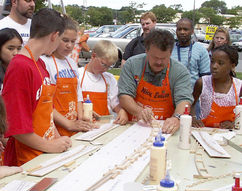
Young participants in a "Rib Workshop" make ribs for a 1903 Wright
Flyer.
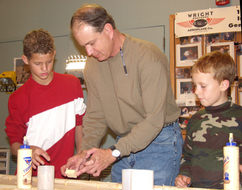
Public awareness increases if you ask local leaders and
personalities to work side-by-side with the kids. Here Stephen
Wright, great-grandnephew of Wilbur and Orville Wright, builds a rib
with his sons.
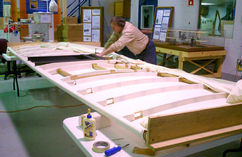
As the wing ribs accumulate, they are incorporated into wings and
covered.
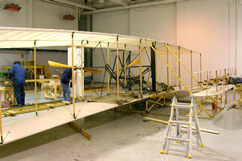
The covered wings come together in our hangar to make a Flyer.
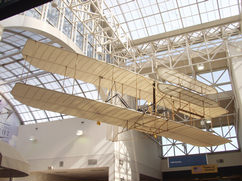
And the completed Flyer is installed in your institution. This is
the 1903 Flyer replica we built (with the participation of young
people from all over America) to hang in the Dayton International
Airport.
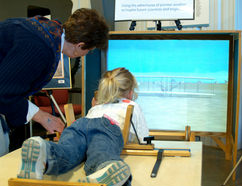
Our 1903 Wright Flyer Flight Simulator. In a museum setting, the
simulator and the aircraft work together to make a popular
interactive display.
|

